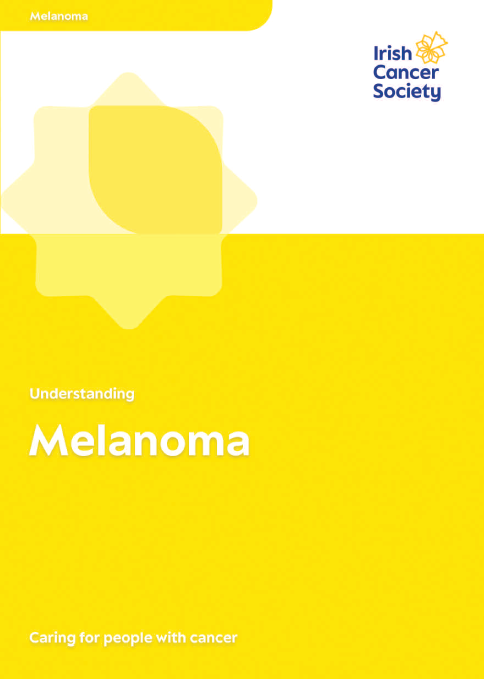Melanoma
About 1,290 people are diagnosed with melanoma skin cancer each year in Ireland.*
Signs and symptoms
Learn about the signs and symptoms of melanoma skin cancer. You are more likely to survive cancer if you find it at an earlier stage.
Treatment
There are a number of different treatments available for melanoma skin cancer. Your medical team will explain the best treatment options for you.
What is melanoma?
Melanoma is a type of skin cancer that affects melanocytes, the cells that make melanin. Melanin provides pigmentation (colour) to your skin, eyes and hair.
Melanoma happens when melanocytes change and grow out of control. The cell changes usually start in the surface of the skin, either in a mole or in normal skin. If not caught early, it can spread to other parts of your body.
In rare cases, melanoma may develop in other parts of your body. For example, your eye, mouth, under your finger nails or toe nails, or in your lungs or bowel. Ask your consultant or call our Support Line on 1800 200 700 for more information if you have one of these rarer types of melanoma.
A short video about skin cancer, the signs and symptoms, types and treatments, and how to reduce your risk.
About your skin
The skin is the outer covering of your body. The skin has two main layers:
- The outer layer (epidermis)
- The inner or deeper layer (dermis)
The outer layer has three types of cells:
- Flat, scaly cells called squamous cells.
- Rounder cells called basal cells, found below the squamous cells.
- Cells that give skin its colour (melanocytes). These are in between the basal cells.
Non-melanoma skin cancer affects the squamous cells and basal cells.
Melanoma skin cancer affects the melanocytes.
The deepest layer called the dermis has blood and lymph vessels, hair roots and sweat glands.
What increases my risk of melanoma?
Everyone is at some risk for melanoma, but increased risk depends on:
- Exposure to UV light: Exposure to ultraviolet (UV) radiation from the sun’s rays (even on cool or cloudy days) or tanning lamps and sunbeds increases the risk of melanoma.
- Sunbeds: People who have used a sunbed have a 20% increased risk of melanoma. Starting to use them at a young age increases the risk even more.
- Skin type and eye colouring: People with fair skin with fair or red hair and blue, green or grey eyes are more at risk.
- Moles: Having a large number of moles or moles which look unusual.
- Age: Risk of developing melanoma increases with age.
- Family history of melanoma or skin cancer: Your risk increases if you have a family member with skin cancer. Remember though melanoma is not infectious and cannot be passed on to others.
- Weakened immune system: For example, after an organ transplant, when taking medicines that suppress your immune system or with illnesses such as HIV/AIDs.
- Genetic skin disorders: Your risk is greater if you have a genetic condition that makes your skin more sensitive to sunlight, such as xeroderma pigmentosum.
Reducing your risk of melanoma
The most important things you can do to reduce your risk of melanoma are:
- Protect your skin from UV rays from the sun.
- Don’t use sunbeds.
- Check your skin regularly for any unusual changes.
Medical content updated from our 'Understanding melanoma' booklet (2023), reviewed by Dr Aoife Lally, Consultant Dermatologist, Katrina Fogarty, Clinical Nurse Specialist Melanoma, Emma O'Riordan, Oncology Liaison Nurse and Sinead Power, Daffodil Centre Nurse.
Talk to a Cancer Nurse

Support Line
Our Daffodil Centres

*The Irish Cancer Society uses the most up-to-date cancer statistics from the National Cancer Registry Ireland, available on www.ncri.ie

